Effectiveness of Instruments Supporting Inter-Organizational Cooperation in the RES Market in Europe. Case Study of Enterprise Europe Network
Abstract
1. Introduction
- The location of the event (country and region of Europe where it takes place);
- The type of activity (brokerage event versus company mission);
- The main supporting partner (public versus private).
2. Literature Review and Hypothesis Development
3. Materials and Methods
3.1. Sample
3.2. Variables, Structure of Data, and Description of Statistical Methods
4. Results
4.1. The Impact of the Event’s Location on the Number of Meetings and the Number of Partnerships Established
- Western Europe—United Kingdom, Ireland, the Netherlands, Belgium, Luxembourg, and France.
- Central Europe—Poland, Slovakia, Czech Republic, Hungary, Slovenia, Austria, Germany, and Switzerland.
- Northern Europe—Norway, Sweden, Denmark, Finland, and Iceland.
- Eastern Europe—Lithuania, Latvia, Estonia, Ukraine, Bulgaria, Moldova, Romania, Russia, and Kazakhstan.
- Southern Europe—Serbia, Bosnia and Herzegovina, Croatia, Albania, Montenegro, Spain, Macedonia, Greece, Malta, Portugal, Turkey, and Italy and Cyprus.
4.2. Impact of the Type of Promotional Event on the Number of Meetings and the Number of Partnerships Established
4.3. Impact of the Type of Lead Partner Supporting a Promotional Event on the Number of Meetings and the Number of Partnerships Established
5. Theoretical Implications and Discussion
6. Limitations of Analysis and Future Research
7. Conclusions
Author Contributions
Funding
Conflicts of Interest
References
- Sieg, J.H.; Wallin, M.W.; von Krogh, G. Managerial challenges in open innovation: A study of innovation intermediation in the chemical industry. R D Manag. 2010, 40, 281–291. [Google Scholar] [CrossRef]
- Smedlund, A. The roles of intermediaries in regional knowledge systems. J. Intellect. Cap. 2006, 7, 204–222. [Google Scholar] [CrossRef]
- Knockaert, M.; Spithoven, A.; Clarysse, B. The impact of technology intermediaries on firm cognitive capacity additionality. Technol. Forecast. Soc. Chang. 2014, 81, 376–387. [Google Scholar] [CrossRef]
- Lin, H.; Zeng, S.; Liu, H.; Li, C. How do intermediaries drive corporate innovation? A moderated examination. J. Bus. Res. 2016, 69, 4831–4836. [Google Scholar] [CrossRef]
- Howells, J. Intermediation and the role of intermediaries in innovation. Res. Policy 2006, 35, 715–728. [Google Scholar] [CrossRef]
- Klerkx, L.; Leeuwis, C. Matching demand and supply in the agricultural knowledge infrastructure: Experiences with innovation intermediaries. Food Policy 2008, 33, 260–276. [Google Scholar] [CrossRef]
- Gródek-Szostak, Z.; Szeląg-Sikora, A.; Sikora, J.; Korenko, M. Prerequisites for the cooperation between enterprises and business support institutions for technological development. In Business and Non-profit Organizations Facing Increased Competition and Growing Customers’ Demand; Wyższa Szkoła Biznesu, National–Louis University: Nowy Sącz, Poland, 2017; Volume 16, pp. 427–439. [Google Scholar]
- Gródek-Szostak, Z.; Luc, M.; Szeląg-Sikora, A.; Sikora, J.; Niemiec, M.; Ochoa Siguencia, L.; Velinov, E. Promotion of RES in a Technology Transfer Network. Case Study of the Enterprise Europe Network. Energies 2020, 13, 3445. [Google Scholar] [CrossRef]
- Szeląg-Sikora, A.; Sikora, J.; Niemiec, M.; Gródek-Szostak, Z.; Kapusta-Duch, J.; Kuboń, M.; Komorowska, M.; Karcz, J. Impact of Integrated and Conventional Plant Production on Selected Soil Parameters in Carrot Production. Sustainability 2019, 11, 5612. [Google Scholar] [CrossRef]
- Niemiec, M.; Chowaniak, M.; Sikora, J.; Szeląg-Sikora, A.; Gródek-Szostak, Z.; Komorowska, M. Selected Properties of Soils for Long-Term Use in Organic Farming. Sustainability 2020, 12, 2509. [Google Scholar] [CrossRef]
- Velinov, E.; Petrenko, Y.; Vechkinzova, E.; Denisov, I.; Ochoa Siguencia, L.; Gródek-Szostak, Z. “Leaky Bucket” of Kazakhstan’s Power Grid: Losses and Inefficient Distribution of Electric Power. Energies 2020, 13, 2947. [Google Scholar] [CrossRef]
- Sikora, J.; Niemiec, M.; Szeląg-Sikora, A.; Gródek-Szostak, Z.; Kuboń, M.; Komorowska, M. The Impact of a Controlled-Release Fertilizer on Greenhouse Gas Emissions and the Efficiency of the Production of Chinese Cabbage. Energies 2020, 13, 2063. [Google Scholar] [CrossRef]
- REN21. Renewables 2019 Global Status Report; REN21 Secretariat: Paris, France, 2019; Available online: http://www.ren21.net/gsr-2019/ (accessed on 4 November 2020).
- Gródek-Szostak, Z.; Suder, M.; Kusa, R.; Szeląg-Sikora, A.; Duda, J.; Niemiec, M. Renewable Energy Promotion Instruments Used by Innovation Brokers in a Technology Transfer Network. Case Study of the Enterprise Europe Network. Energies 2020, 13, 5752. [Google Scholar] [CrossRef]
- Sanderink, L.; Nasiritousi, N. How institutional interactions can strengthen effectiveness: The case of multi-stakeholder partnerships for renewable energy. Energy Policy 2020, 141, 111447. [Google Scholar] [CrossRef]
- Erickson, J.D.; Chapman, D. Technologia fotowoltaiczna: Rynki, ekonomia i rozwój obszarów wiejskich. World Dev. 1995, 23, 1129–1141. [Google Scholar] [CrossRef]
- Dwyer, F.R.; Schurr, P.H.; Oh, S. Developing buyer–supplier relationships. J. Mark. 1987, 51, 11–27. [Google Scholar] [CrossRef]
- Von Hippel, E. Cooperation between rivals: Informal know-how trading. Res. Policy 1987, 16, 291–302. [Google Scholar] [CrossRef]
- Wood, D.; Gray, B. Toward a Comprehensive Theory of Collaboration. J. Appl. Behav. Sci. 1991, 27, 139–162. [Google Scholar] [CrossRef]
- Dyer, J.H.; Singh, H. The Relational View: Cooperative Strategy and Sources of Interorganizational Competitive Advantage. Acad. Manag. Rev. 1998, 23, 660–679. [Google Scholar] [CrossRef]
- Yue-Ming, S. Inter-organizational Network and Firm Performance: The Case of the Bicycle Industry in Taiwan. Asian Bus. Manag. 2005, 4, 67–91. [Google Scholar] [CrossRef]
- Fawcett, S.E.; Magnan, G.M.; McCarter, M.W. A Three-Stage Implementation Model for Supply Chain Collaboration. J. Bus. Logist. 2008, 29, 93–112. [Google Scholar] [CrossRef]
- Venugopalan, M.; Gyanendra, S.; Rajeevkumar, P. Business relational capital and firm performance: An insight from Indian textile industry. Int. J. Learn. Intell. Cap. 2018, 15, 341–362. [Google Scholar] [CrossRef]
- Welbourne, T.M.; Pardo-del-Val, M. Relational Capital: Strategic Advantage for Small and Medium-Size Enterprises (SMEs) Through Negotiation and Collaboration. Group Decis. Negot. 2009, 18, 483–497. [Google Scholar] [CrossRef]
- Alexiev, A.S.; Volberda, H.W.; Van den Bosch, F.A.J. Interorganizational collaboration and firm innovativeness: Unpacking the role of the organizational environment. J. Bus. Res. 2016, 69, 974–984. [Google Scholar] [CrossRef]
- Kusa, R.; Palacios Marques, D.; Ribeiro Navarrete, B. External cooperation and entrepreneurial orientation in industrial clusters. Entrep. Reg. Dev. 2019, 31, 119–132. [Google Scholar] [CrossRef]
- Coleman, J.S. Foundations of Social Theory; Harvard University Press: Cambridge, MA, USA, 1990. [Google Scholar]
- Strobl, A.; Peters, M.; Raich, M. Entrepreneurial Networks: Exploring the Role of Social Capital. Int. Rev. Entrep. 2014, 12, 103–132. [Google Scholar]
- Nahapiet, J.; Ghoshal, S. Social capital, intellectual capital, and the organizational advantage. Acad. Manag. Rev. 1998, 23, 242–266. [Google Scholar] [CrossRef]
- Presutti, M.; Odorici, V. Linking entrepreneurial and market orientation to the SME’s performance growth: The moderating role of entrepreneurial experience and networks. Int. Entrep. Manag. J. 2019, 15, 697–720. [Google Scholar] [CrossRef]
- Goes, J.B.; Park, S.H. Interorganizational links and innovation: The case of hospital services. Acad. Manag. J. 1997, 40, 673–696. [Google Scholar]
- Kraatz, M.S. Learning by association? Interorganizational networks and adaptation to environmental change. Acad. Manag. J. 1998, 41, 621–643. [Google Scholar]
- Barringer, B.R.; Ireland, R.D. Entrepreneurship: Successfully Launching New Ventures, 5th ed.; Prentice Hall: Upper Saddle River, NJ, USA, 2016. [Google Scholar]
- Li, J.J.; Zhou, K.Z. How foreign firms achieve competitive advantage in the Chinese emerging economy: Managerial ties and market orientation. J. Bus. Res. 2010, 63, 856–862. [Google Scholar] [CrossRef]
- Jost, P. Endogenous formation of entrepreneurial networks. Small Bus. Econ. 2019. [Google Scholar] [CrossRef]
- Schoonjans, B.; Van Cauwenberge, P.; Vander Bauwhede, H. Formal business networking and SME growth. Small Bus. Econ. 2013, 41, 169–181. [Google Scholar] [CrossRef]
- Xu, Z.; Lin, J.; Lin, D. Networking and innovation in SMEs: Evidence from Guangdong Province, China. J. Small Bus. Enterp. Dev. 2008, 15, 788–801. [Google Scholar] [CrossRef]
- Gulati, R. Network location and learning: The influence of network resources and firm capabilities on alliance formation. Strateg. Manag. J. 1999, 20, 397–420. [Google Scholar] [CrossRef]
- Czakon, W. Network Strategies Logic. Problemy Zarządzania 2016, 14, 17–30. [Google Scholar]
- Uzzi, B. The Sources and Consequences of Embeddedness for the Economic Performance of Organizations: The Network Effect. Am. Sociol. Rev. 1996, 61, 674–698. [Google Scholar] [CrossRef]
- Breschi, S.; Malerba, F. Sectoral innovation systems: Technological regimes, Schumpeterian dynamics, and spatial boundaries. In Systems of Innovation: Technologies, Institutions and Organizations; Edquist, C., Ed.; Routledge: London, UK, 1997; pp. 130–156. [Google Scholar]
- Leick, B.; Gretzinger, S. Business networking in organisationally thin regions: A case study on network brokers, SMEs and knowledge-sharing. J. Small Bus. Enterp. Dev. 2020, 27, 839–861. [Google Scholar] [CrossRef]
- Cisi, M.; Devicienti, F.; Manello, A.; Vannoni, D. The advantages of formalizing networks: New evidence from Italian SMEs. Small Bus. Econ. 2020, 54, 1183–1200. [Google Scholar] [CrossRef]
- Cohen, B. Sustainable valley entrepreneurial ecosystems. Bus. Strategy Environ. 2006, 15, 1–14. [Google Scholar] [CrossRef]
- Feld, B. Startup Communities: Building an Entrepreneurial Ecosystem in Your City; John Wiley & Sons: Hoboken, NJ, USA, 2012. [Google Scholar]
- Stam, F.C.; Spigel, B. Entrepreneurial Ecosystems; USE Discussion Paper Series; Utrecht School of Economics: Utrecht, The Netherlands, 2016; Volume 16. [Google Scholar]
- Cochran, W.G. The χ2 test of goodness of fit. Ann. Math. Stat. 1952, 25, 315–345. [Google Scholar] [CrossRef]
- Montgomery, D.C. Introduction to Statistical Quality Control, 3rd ed.; John Wiley & Sons, Inc.: Hoboken, NJ, USA, 1997. [Google Scholar]
- Lehmann, E.L. NONPARAMETRICS: Statistical Methods Based on Ranks; Springer: Nowy Jork, NY, USA, 1975. [Google Scholar]
- Isenberg, D.J. How to start an entrepreneurial revolution. Harv. Bus. Rev. 2010, 88, 40–50. [Google Scholar]
- Edquist, C. Systems of innovation approaches: Their emergence and characteristics. In Systems of Innovation: Technologies, Institutions and Organizations; Edquist, C., Ed.; Routledge: London, UK, 1997; pp. 1–35. [Google Scholar]
- Lundvall, B.-A. (Ed.) National Systems of Innovation: Towards a Theory of Innovation and Interactive Learning; Pinter Publishers: London, UK, 1992. [Google Scholar]
- Asheim, B.T.; Gertler, M.S. The geography of innovation: Regional innovation systems. In The Oxford Handbook of Innovation; Fagerberg, J., Mowery, D., Nelson, R., Eds.; Oxford University Press: Oxford, UK, 2005; pp. 291–317. [Google Scholar]
- Radicic, D.; Pugh, G.; Douglas, D. Promoting cooperation in innovation ecosystems: Evidence from European traditional manufacturing SMEs. Small Bus Econ 2020, 54, 257–283. [Google Scholar] [CrossRef]
- Rese, A.; Baier, D. Success factors for innovation management in networks of small and medium enterprises. R D Manag. 2011, 41, 138–155. [Google Scholar] [CrossRef]
- Phelps, C.C. A Longitudinal Study of the Influence of Alliance Network Structure and Composition on Firm Exploratory Innovation. Acad. Manag. J. 2010, 53, 890–913. [Google Scholar] [CrossRef]
- Rosson, P.; Seringhaus, F.H.R. Visitor and exhibitor interaction at industrial trade shows. J. Bus. Res. 1995, 32, 81–90. [Google Scholar] [CrossRef]
- Evers, N.; Knight, J. Role of international trade shows in small firm internationalization: A network perspective. Int. Mark. Rev. 2008, 25, 544–562. [Google Scholar] [CrossRef]
- Coombs, R.; Metcalfe, J.S. Organizing for innovation: Co-ordinating distributed innovation capabilities. In Competence, Governance and Entrepreneurship; Foss, N., Ed.; Oxford University Press: Oxford, UK, 2000; pp. 209–231. [Google Scholar]
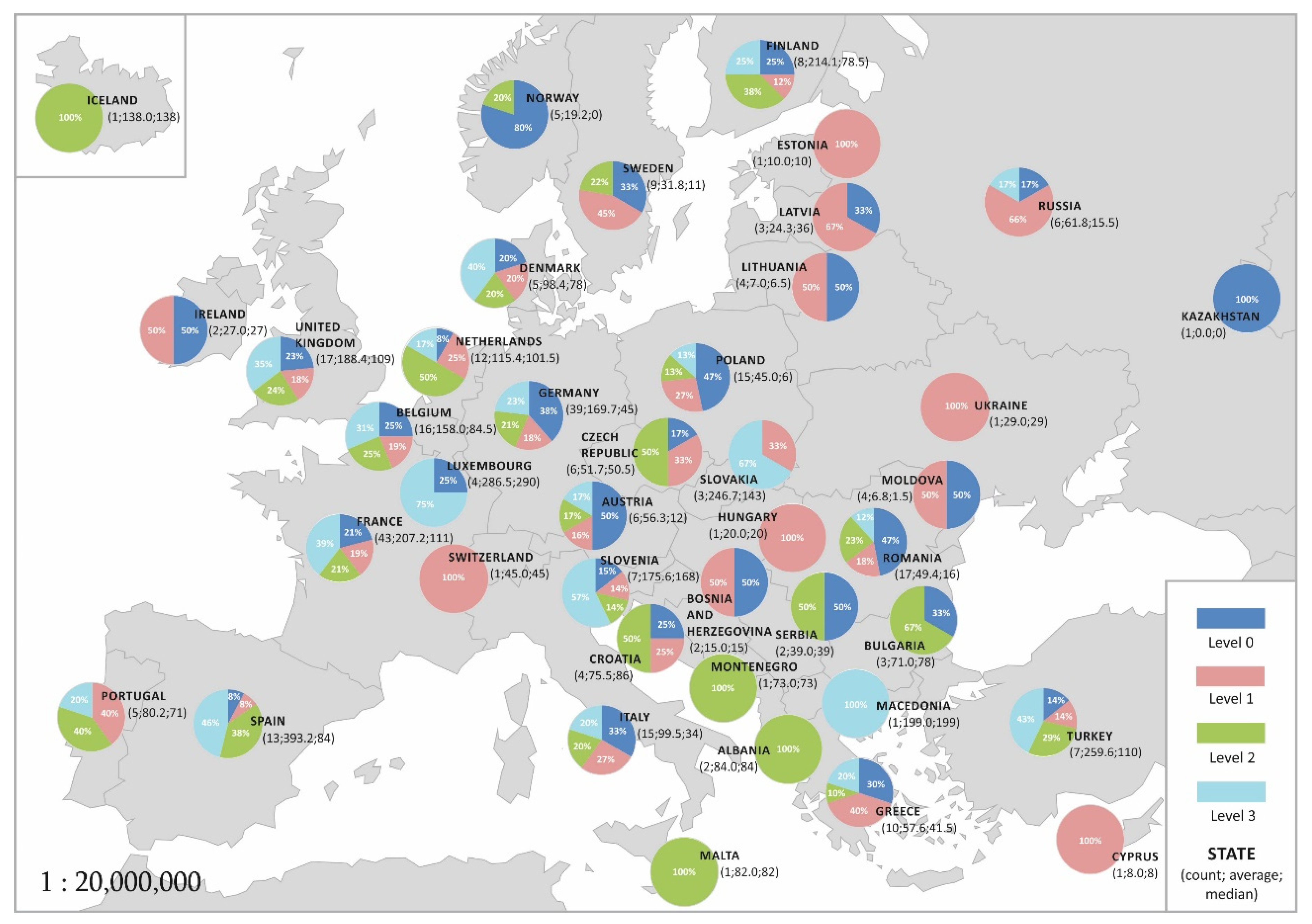
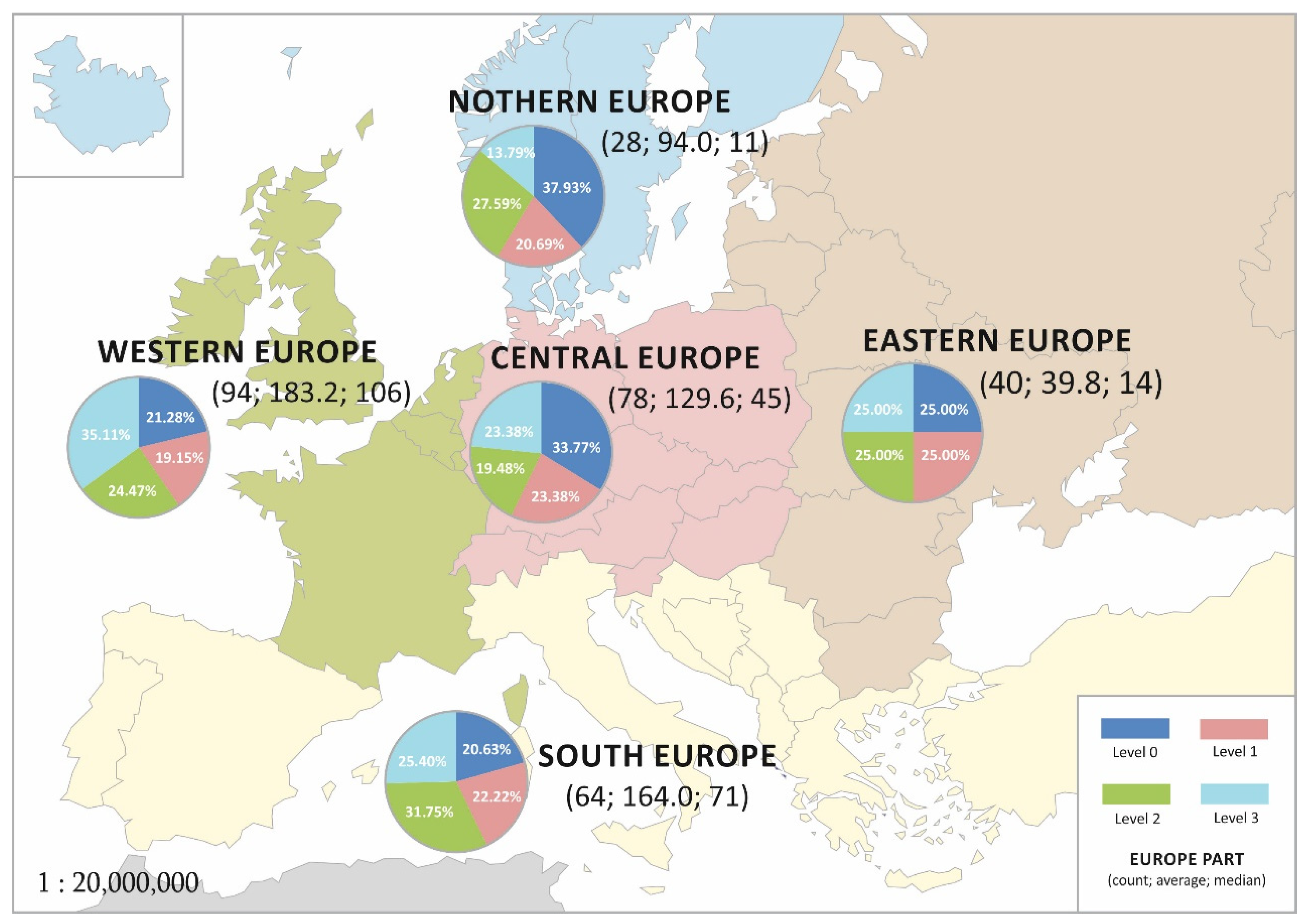
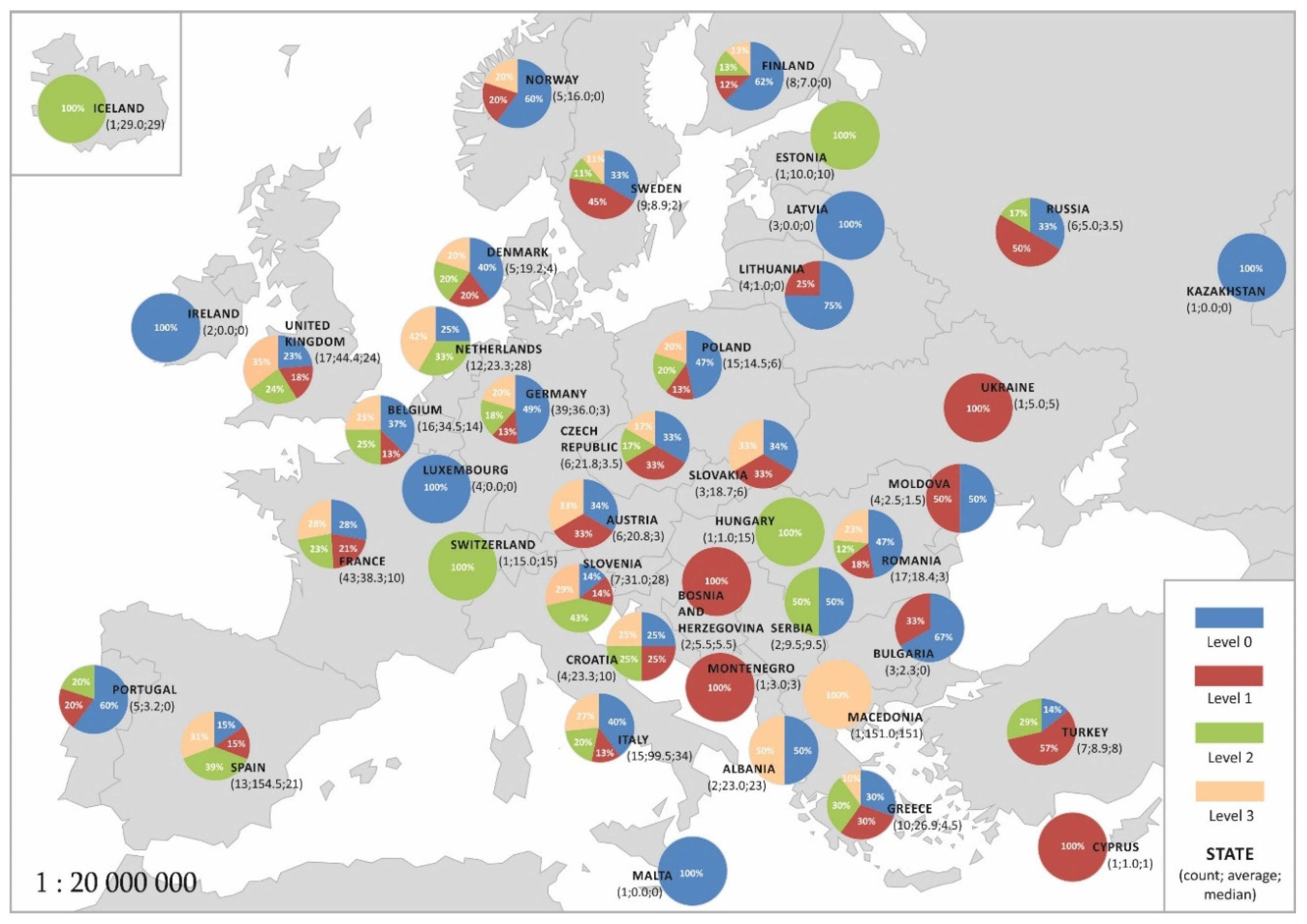
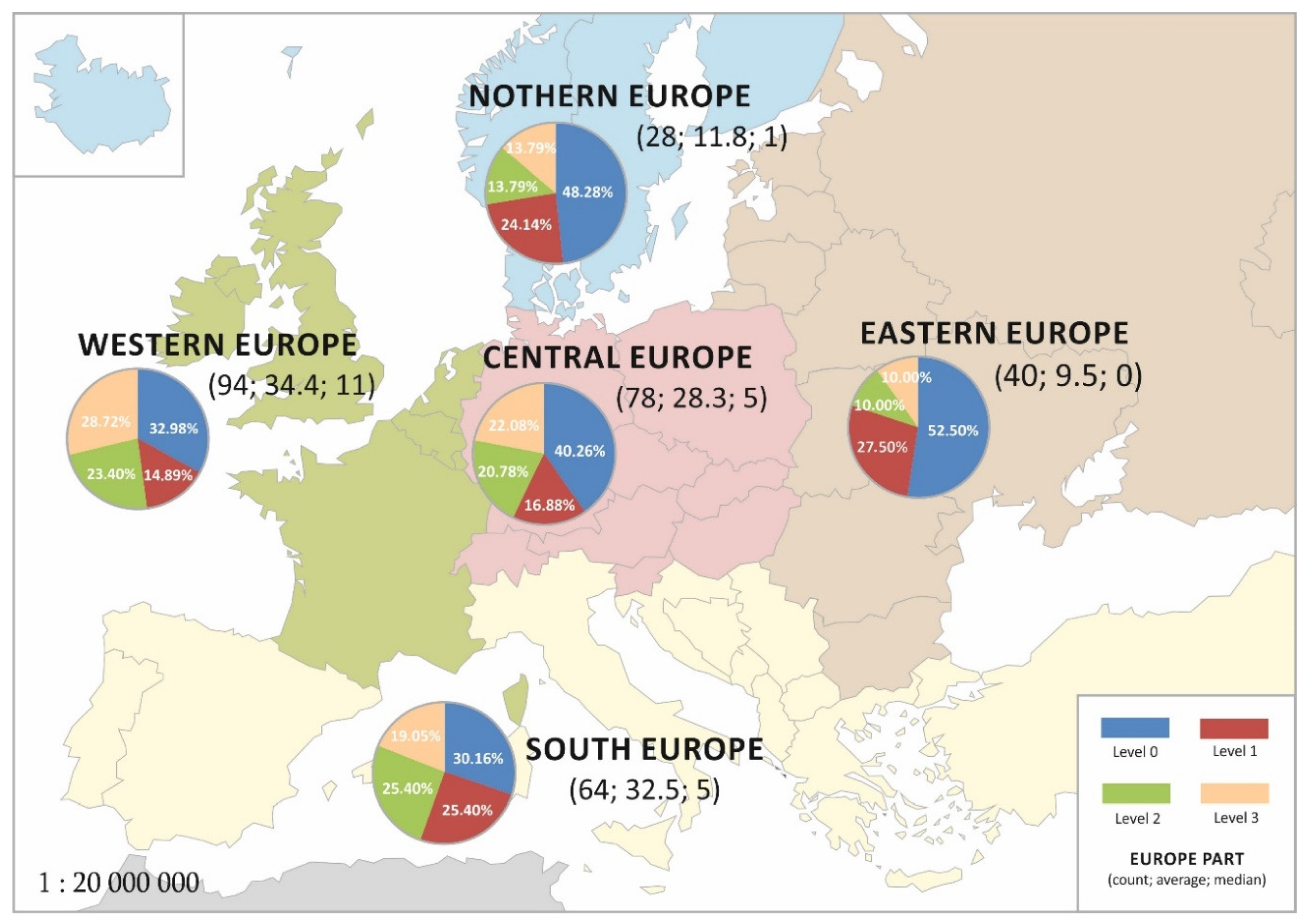
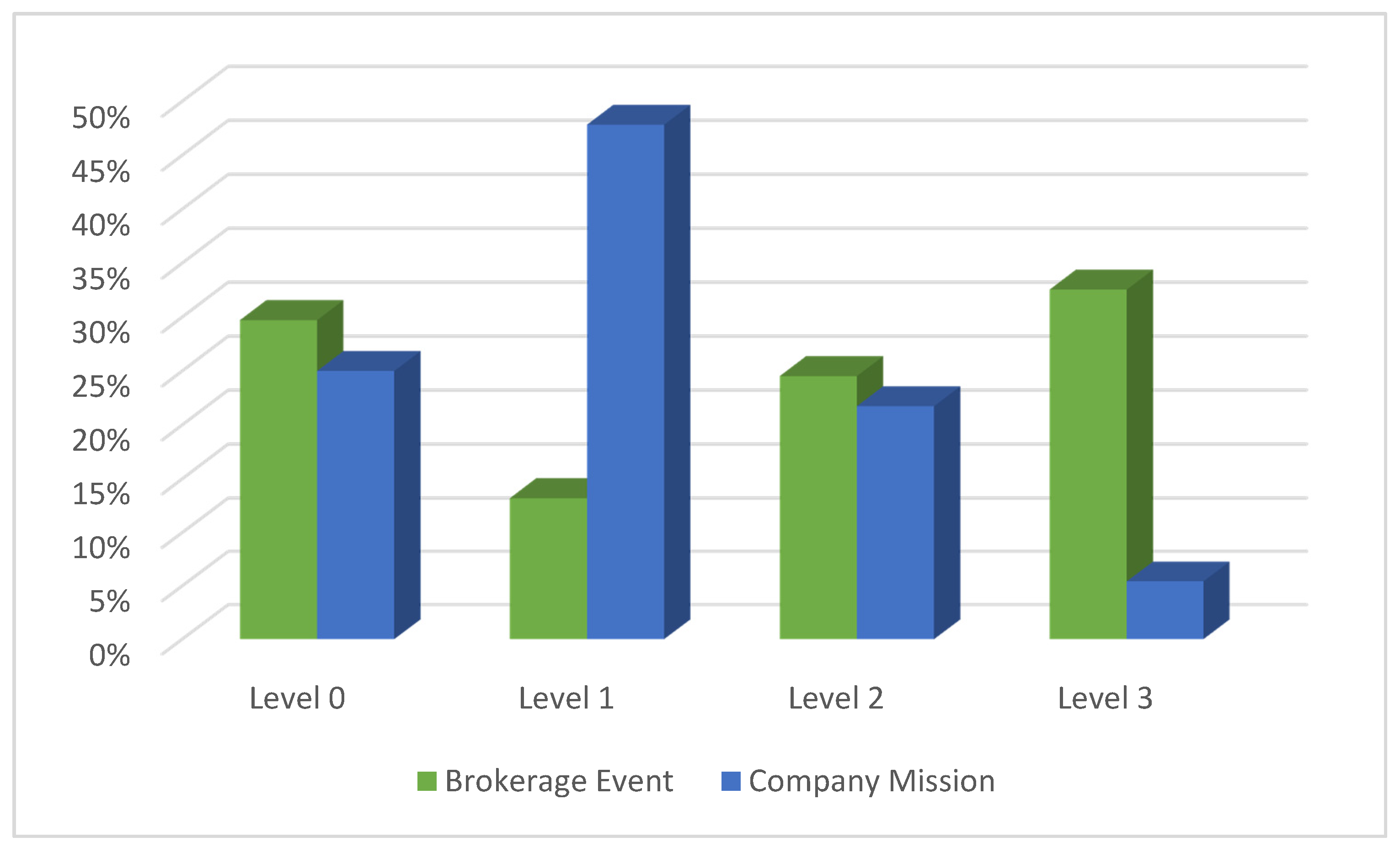
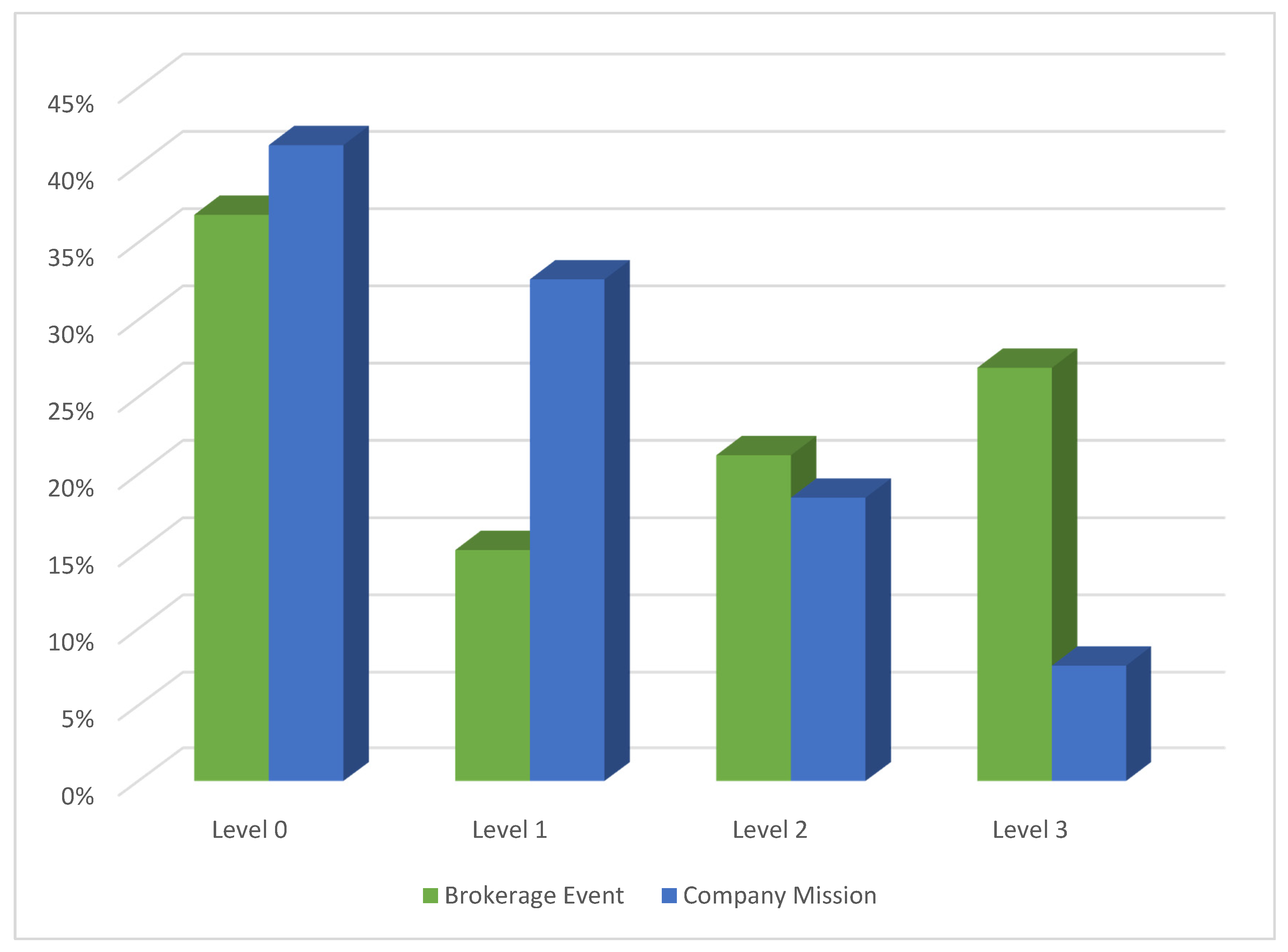
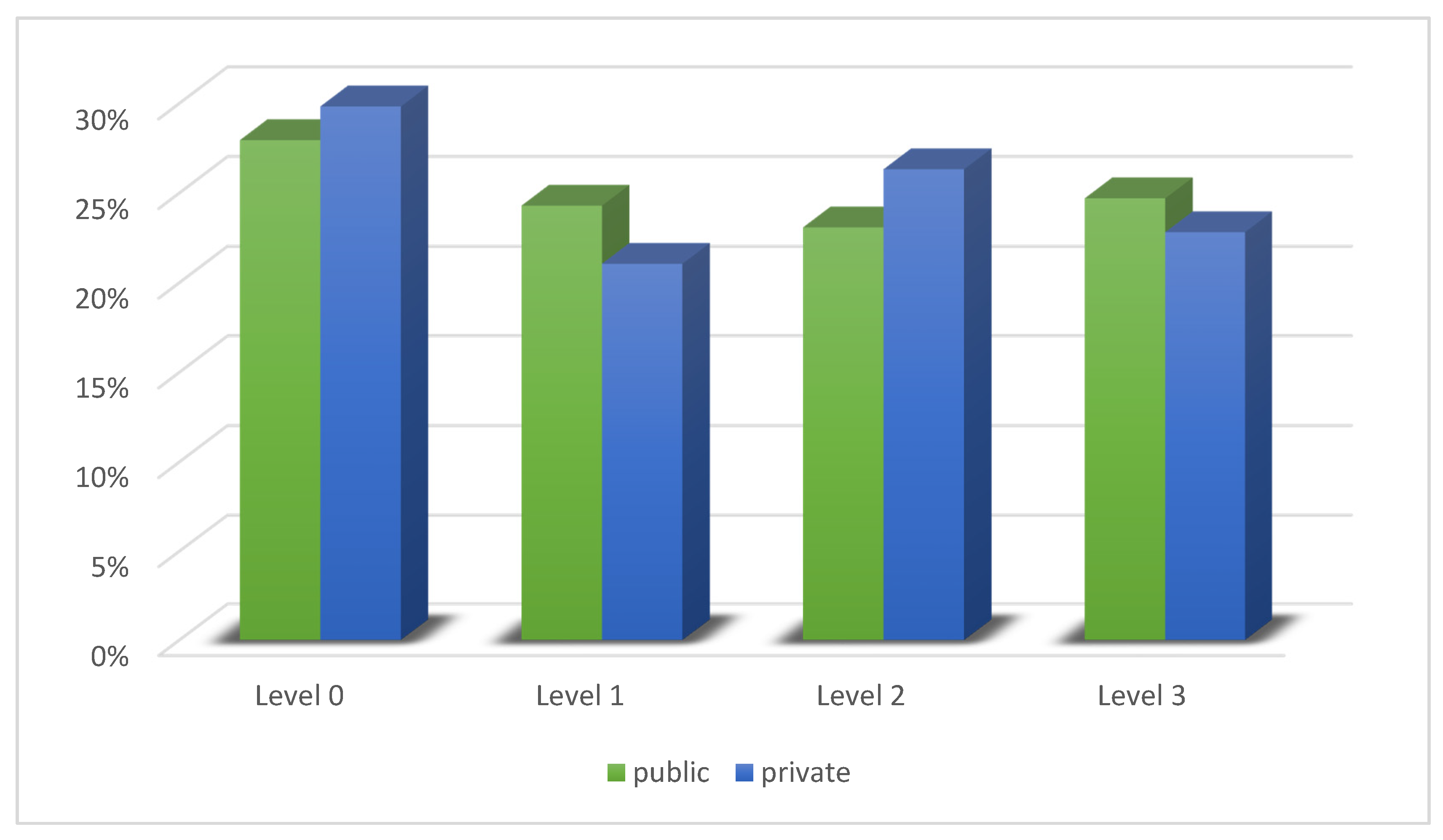
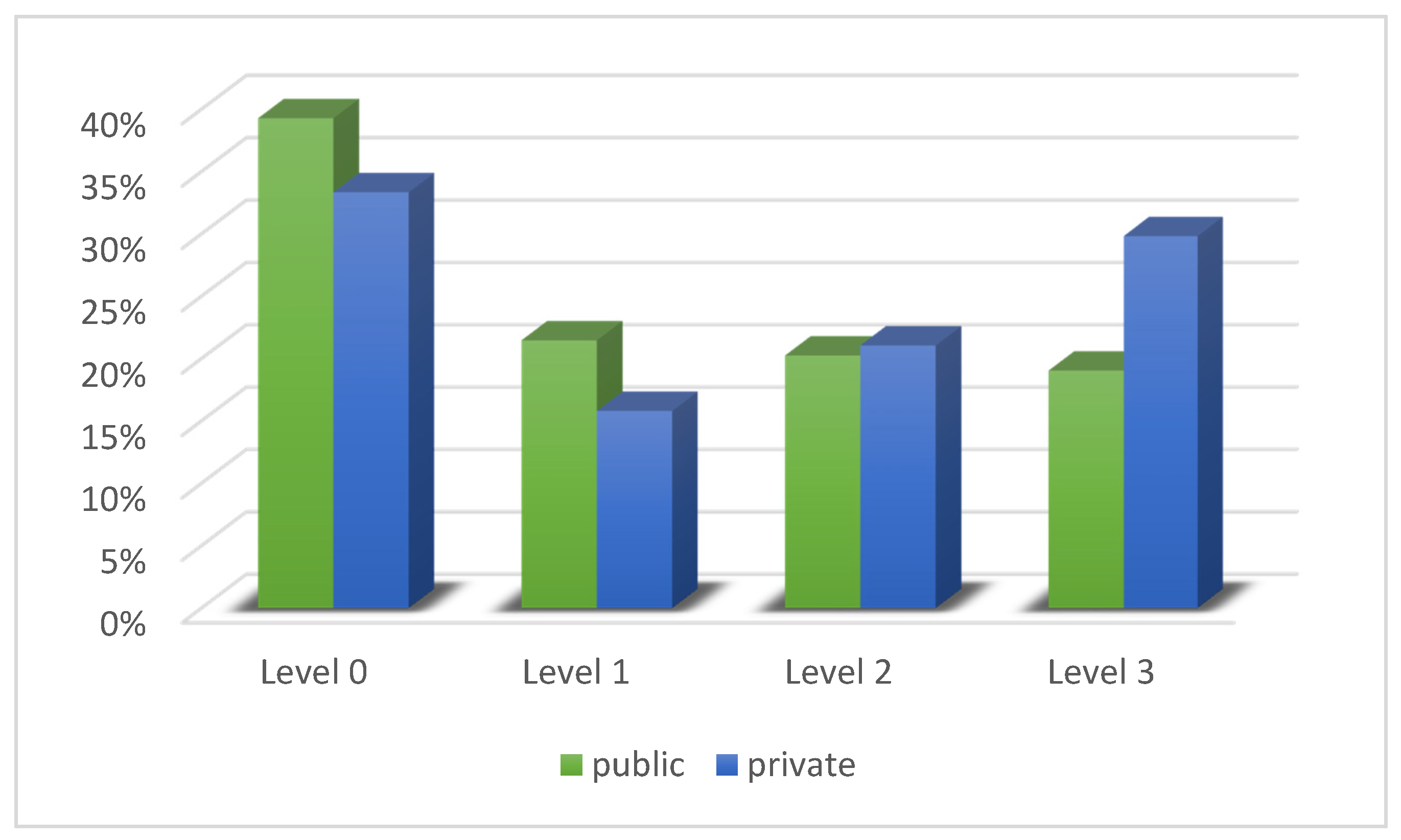
| Count | Average | Median | Standard Deviation | Coeff. of Variation | Min. | Max. |
|---|---|---|---|---|---|---|
| 304 | 136.7 | 55.5 | 241.9 | 177% | 0 | 1446 |
| Count | Average | Median | Standard Deviation | Coeff. of Variation | Min. | Max. |
|---|---|---|---|---|---|---|
| 304 | 32.6 | 5 | 85.3 | 263.7% | 0 | 776 |
| Type of Event | Count | Average | Median | Standard Deviation | Coeff. of Variation | Min. | Max. |
|---|---|---|---|---|---|---|---|
| BE | 212 | 177.7 | 77.5 | 277.4 | 156.1% | 0 | 1446 |
| CM | 92 | 45.5 | 24 | 59.4 | 130.7% | 0 | 387 |
| Type of Event | Count | Average | Median | Standard Deviation | Coeff. of Variation | Min. | Max. |
|---|---|---|---|---|---|---|---|
| BE | 212 | 41.6 | 8 | 99.7 | 239.8% | 0 | 776 |
| CM | 92 | 11.1 | 3 | 23.6 | 212.4% | 0 | 131 |
| Type of Partner | Count | Average | Median | Standard Deviation | Coeff. of Variation | Min. | Max. |
|---|---|---|---|---|---|---|---|
| public | 247 | 139.2 | 55 | 245.1 | 176.1% | 0 | 1446 |
| private | 57 | 131.1 | 61 | 227.6 | 173.6% | 0 | 974 |
| Type of Partner | Count | Average | Median | Standard Deviation | Coeff. of Variation | Min. | Max. |
|---|---|---|---|---|---|---|---|
| public | 247 | 29.3 | 4 | 81.3 | 278.0% | 0 | 776 |
| private | 57 | 45.8 | 11 | 100.5 | 219.7% | 0 | 595 |
Publisher’s Note: MDPI stays neutral with regard to jurisdictional claims in published maps and institutional affiliations. |
© 2020 by the authors. Licensee MDPI, Basel, Switzerland. This article is an open access article distributed under the terms and conditions of the Creative Commons Attribution (CC BY) license (http://creativecommons.org/licenses/by/4.0/).
Share and Cite
Gródek-Szostak, Z.; Suder, M.; Kusa, R.; Sikora, J.; Niemiec, M. Effectiveness of Instruments Supporting Inter-Organizational Cooperation in the RES Market in Europe. Case Study of Enterprise Europe Network. Energies 2020, 13, 6443. https://doi.org/10.3390/en13236443
Gródek-Szostak Z, Suder M, Kusa R, Sikora J, Niemiec M. Effectiveness of Instruments Supporting Inter-Organizational Cooperation in the RES Market in Europe. Case Study of Enterprise Europe Network. Energies. 2020; 13(23):6443. https://doi.org/10.3390/en13236443
Chicago/Turabian StyleGródek-Szostak, Zofia, Marcin Suder, Rafał Kusa, Jakub Sikora, and Marcin Niemiec. 2020. "Effectiveness of Instruments Supporting Inter-Organizational Cooperation in the RES Market in Europe. Case Study of Enterprise Europe Network" Energies 13, no. 23: 6443. https://doi.org/10.3390/en13236443
APA StyleGródek-Szostak, Z., Suder, M., Kusa, R., Sikora, J., & Niemiec, M. (2020). Effectiveness of Instruments Supporting Inter-Organizational Cooperation in the RES Market in Europe. Case Study of Enterprise Europe Network. Energies, 13(23), 6443. https://doi.org/10.3390/en13236443








